Understanding Soybeans: Edamame Vs Mukimame
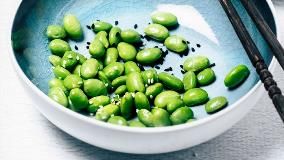
Soybeans are a versatile legume that comes in different varieties, including edamame and mukimame. While they may seem similar, there are key differences between the two. Edamame are young soybeans that are harvested when they are still immature, giving them a vibrant green color and a slightly sweet flavor. On the other hand, mukimame are mature soybeans that have been shelled, allowing for easier consumption. Mukimame have a nuttier taste and a firmer texture compared to edamame. Understanding the distinctions between these two soybean varieties can help you make informed choices when cooking and incorporating them into your meals.
Difference Between Edamame And Mukimame
Edamame and Mukimame may seem similar, but there are key differences between them.
- Harvesting Time: Edamame is harvested when the soybeans are still young and immature, while Mukimame is made from mature soybeans that have been shelled.
- Color: Edamame has a vibrant green color, while Mukimame has a darker and more brownish hue.
- Taste and Texture: Edamame has a slightly sweet flavor and a tender texture, while Mukimame has a nuttier taste and a firmer texture.
- Availability: Edamame is more commonly available in grocery stores and restaurants, while Mukimame may be harder to find.
Understanding these distinctions can help you choose the right soybean variety for your preferences and recipes.
Nutritional Value Of Edamame And Mukimame
Both Edamame and Mukimame are packed with essential nutrients. They are excellent sources of plant-based protein, providing all the essential amino acids the body needs. Edamame and Mukimame are low in calories and fat, making them a healthy snack option. They also contain fiber, which aids in digestion and helps maintain a healthy weight. Both soybean varieties are rich in vitamins and minerals like vitamin K, folate, iron, and calcium. However, it’s important to note that Mukimame, being mature soybeans, may have slightly different nutrient profiles compared to Edamame.
Edamame: The Classic Soybean Variety
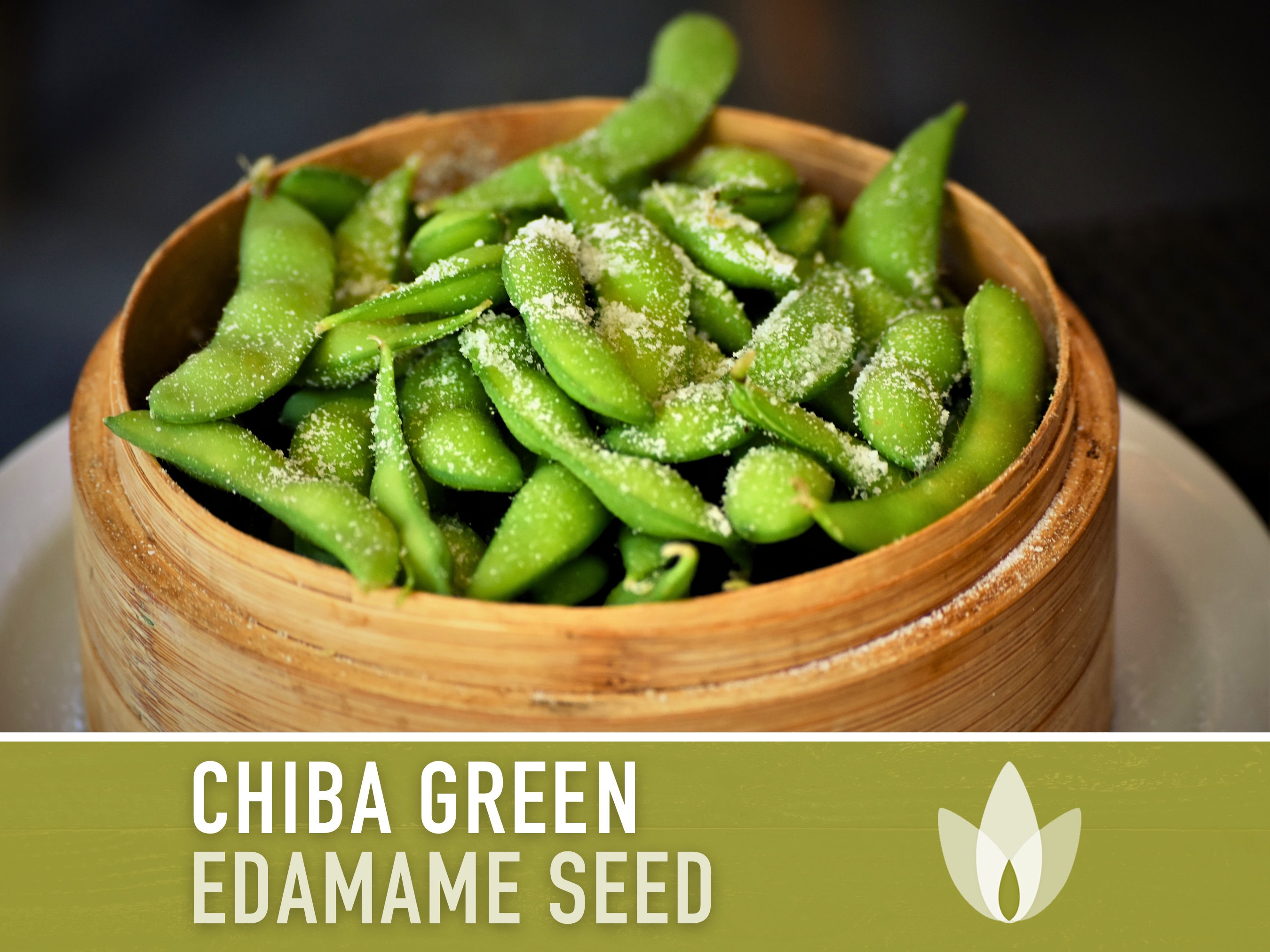
Edamame, known for its vibrant green pods and nutty flavor, is the classic soybean variety that has gained popularity worldwide. Packed with essential nutrients and antioxidants, edamame offers a range of health benefits. It is a rich source of plant-based protein, fiber, vitamins (such as vitamin K and folate), and minerals (including iron and calcium). Edamame is not only nutritious but also versatile in the kitchen. It can be boiled, steamed, or stir-fried, making it a delicious addition to salads, stir-fries, and even dips. Incorporating edamame into your meals can elevate their taste and nutritional value.
Health Benefits Of Edamame
Edamame, the classic soybean variety, offers a plethora of health benefits. Packed with essential nutrients, it is a powerhouse of plant-based protein, fiber, vitamins (such as vitamin K and folate), and minerals (including iron and calcium). Consuming edamame regularly can contribute to improved digestion, enhanced bone health, and strengthened immune function. The high protein content in edamame also helps in muscle repair and growth. Additionally, the antioxidants present in edamame have been linked to reduced inflammation and a lower risk of chronic diseases, such as heart disease and certain types of cancer. Incorporating this nutritious soybean variety into your diet can promote overall wellbeing and support a healthy lifestyle.
Culinary Uses Of Edamame
Edamame, the classic soybean variety, offers a versatile range of culinary uses. These vibrant green beans are most commonly enjoyed as a healthy snack, either boiled or steamed and lightly salted. Edamame can also be incorporated into a variety of dishes, such as stir-fries, salads, and soups, adding a nutritious and flavorful twist. They can be pureed and used as a spread or dip, or even added to pasta, rice, or noodle dishes. Edamame can also be roasted and seasoned with spices for a satisfying crunch. Whatever way you choose to enjoy it, edamame adds a pop of color, taste, and health benefits to any meal.
Mukimame: The Shelled Soybean Alternative
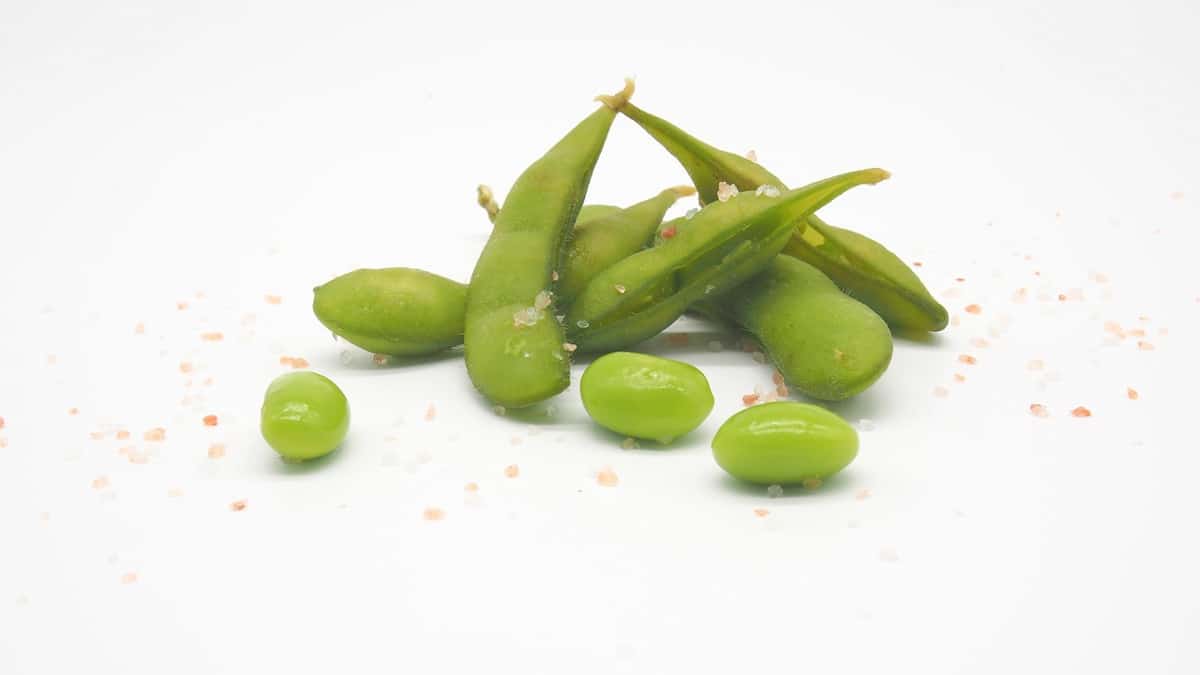
Mukimame is a popular alternative to edamame, offering a unique twist on the classic soybean. Unlike edamame, which is consumed in its whole pod, mukimame is shelled, making it easier to eat and incorporate into various recipes. The removal of the pod also gives mukimame a slightly different texture, with a more tender and creamy bite. Additionally, mukimame has a slightly sweeter and nuttier flavor compared to edamame. This makes it a versatile ingredient that can be used in salads, stir-fries, soups, and more. Whether enjoyed as a snack or added to your favorite dishes, mukimame provides a delicious and nutritious soybean alternative.
Benefits Of Mukimame Over Edamame
Mukimame offers several advantages over Edamame. Firstly, the shelled nature of Mukimame makes it more convenient to eat, eliminating the need to remove the pod before consumption. This makes it easier to incorporate Mukimame into various dishes. Additionally, the removal of the pod gives Mukimame a more tender and creamy texture, enhancing the overall eating experience. Furthermore, Mukimame has a slightly sweeter and nuttier flavor compared to Edamame, adding a unique taste to recipes. Lastly, the slightly darker color of Mukimame provides a visually appealing contrast to other ingredients in dishes.
Cooking Methods For Mukimame
Mukimame can be prepared using various cooking methods to enhance its flavor and create delicious dishes. One common method is boiling the shelled beans in salted water for about 5-7 minutes until they are tender. They can also be steamed for a similar amount of time. Another option is to sauté Mukimame in olive oil or butter along with your favorite seasonings for a savory side dish. Additionally, Mukimame can be roasted in the oven for a crispy texture. These cooking methods allow you to enjoy the unique taste and texture of Mukimame in a variety of ways.
Comparing Edamame And Mukimame
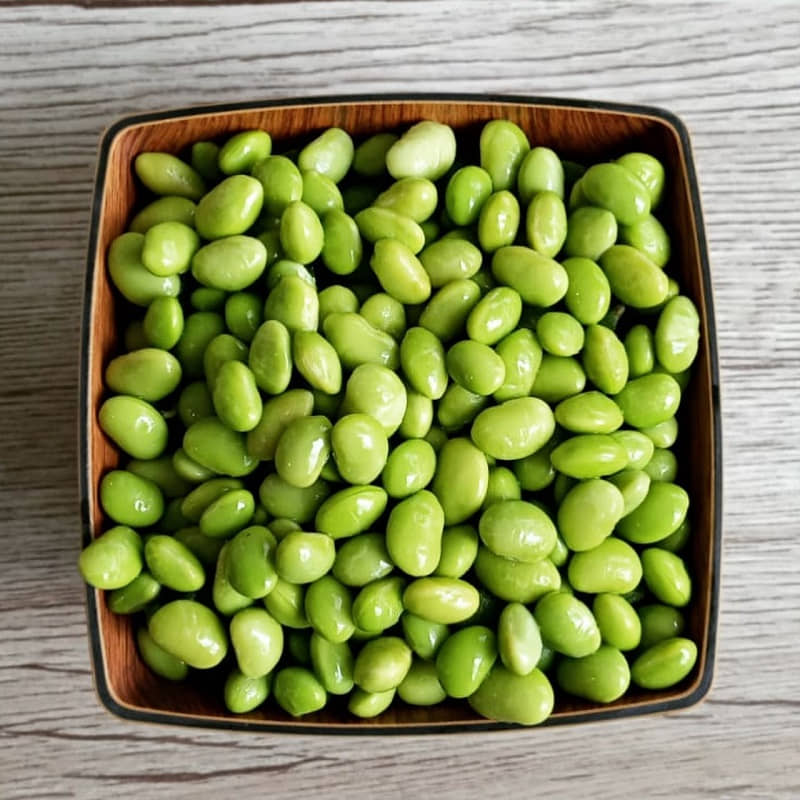
Edamame and Mukimame are two varieties of soybeans that have some notable differences. Comparing the two, Edamame is the classic soybean variety that is harvested when the beans are young and green. It has a slightly sweet and nutty flavor with a firm and crunchy texture. On the other hand, Mukimame is the shelled version of the soybean, which is harvested when the beans are fully mature and have a yellow color. It has a milder flavor and a softer texture compared to Edamame. Additionally, Edamame is more widely available and commonly used in various cuisines, while Mukimame may be less commonly found in grocery stores.
Taste And Texture Differences
When it comes to taste and texture, Edamame and Mukimame have distinct differences. Edamame has a slightly sweet and nutty flavor with a firm and crunchy texture. Its young, green beans provide a satisfying bite and a burst of freshness. On the other hand, Mukimame has a milder flavor and a softer, more tender texture. Its fully matured beans have a yellow color and offer a smoother mouthfeel. These variations in taste and texture give each soybean variety its unique culinary appeal.
Environmental Impact And Sustainability
When comparing the environmental impact and sustainability of Edamame and Mukimame, several factors come into play. Both varieties of soybeans have a relatively low carbon footprint compared to animal protein sources. Additionally, soybeans can help improve soil health and reduce the need for synthetic fertilizers when grown using sustainable farming practices. However, it’s important to note that soybean cultivation, particularly on a large scale, can contribute to deforestation and habitat loss if not managed responsibly. Choosing organic and locally sourced soybeans can help mitigate these negative environmental effects and promote sustainability in soybean production.
Recipes And Serving Ideas
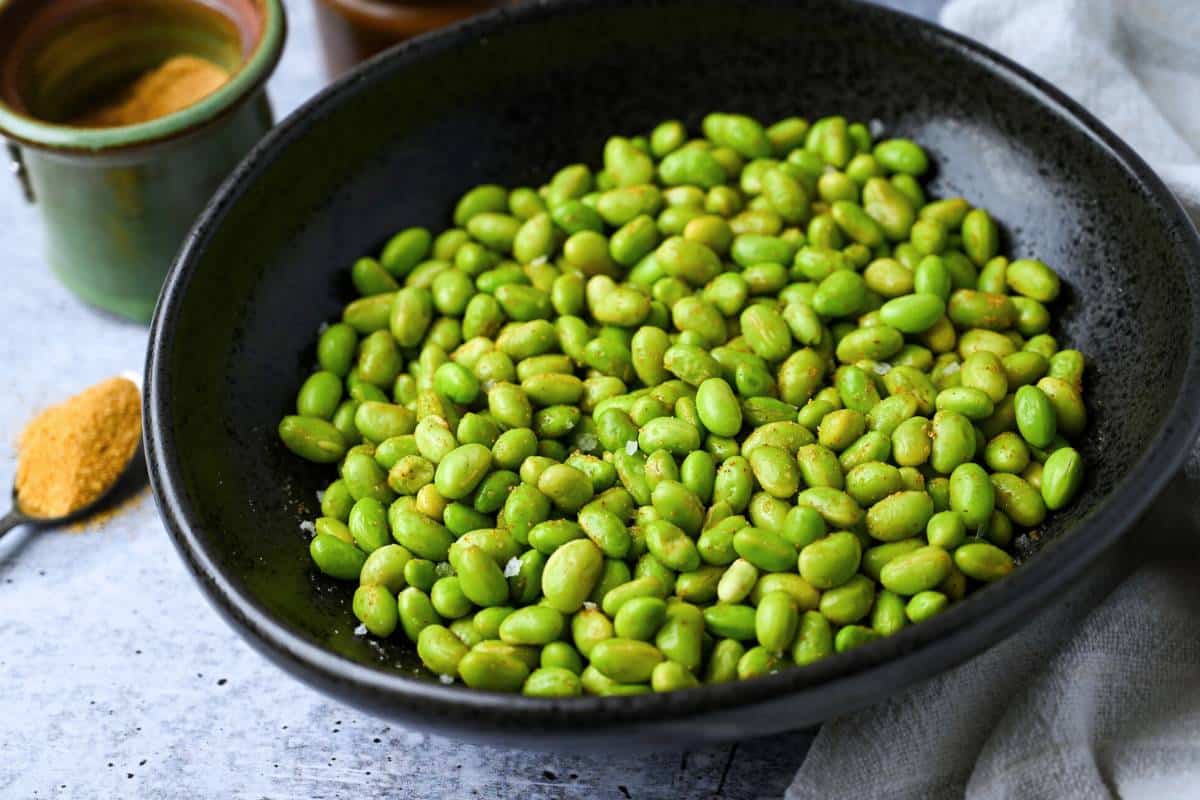
Recipes and Serving Ideas:
Both Edamame and Mukimame offer a versatile and nutritious addition to a variety of dishes. Here are some delicious recipes and serving ideas to incorporate these soybean varieties into your meals:
- Edamame Hummus: Blend cooked edamame with garlic, lemon juice, olive oil, and tahini for a flavorful and protein-packed dip or spread.
- Mukimame Stir-Fry: Sauté shelled mukimame with your favorite vegetables and seasonings for a quick and healthy stir-fry.
- Edamame Salad: Toss cooked edamame with mixed greens, cherry tomatoes, and a sesame dressing for a refreshing and satisfying salad.
- Mukimame Guacamole: Mash cooked shelled mukimame with avocado, lime juice, cilantro, and diced tomatoes for a unique twist on classic guacamole.
- Edamame Sushi Rolls: Add cooked edamame to your homemade sushi rolls for a nutritious and filling ingredient.
- Mukimame Pasta: Mix cooked shelled mukimame with whole wheat pasta, olive oil, garlic, and grated Parmesan cheese for a simple and wholesome pasta dish.
- Edamame Power Bowl: Build a nourishing bowl by combining cooked edamame with quinoa, roasted vegetables, avocado, and a drizzle of soy sauce.
These recipes and serving ideas will help you explore the delicious possibilities of incorporating Edamame and Mukimame into your daily meals. Get creative and enjoy the health benefits and flavors of these soybean varieties!
Delicious Dishes Using Edamame
Edamame, with its vibrant green color and mild flavor, can be enjoyed in a variety of delicious dishes. Here are some ideas to make the most of this versatile soybean variety:
- Edamame Succotash: Combine cooked edamame with corn, bell peppers, cherry tomatoes, and herbs for a colorful and flavorful side dish.
- Edamame Dip: Puree cooked edamame with Greek yogurt, garlic, lemon juice, and fresh herbs for a creamy and nutritious dip.
- Edamame Fried Rice: Stir-fry cooked edamame with leftover rice, vegetables, and soy sauce for a quick and satisfying meal.
- Edamame Hummus Wrap: Spread edamame hummus on a tortilla, add fresh vegetables and roll it up for a healthy and filling wrap.
- Edamame and Quinoa Salad: Toss cooked edamame with cooked quinoa, colorful vegetables, and a tangy vinaigrette for a protein-packed and nutritious salad.
These delicious dishes showcase the versatility of edamame and provide a tasty way to incorporate this nutritious soybean into your meals. Enjoy the flavors and benefits that edamame has to offer!
Creative Ways To Incorporate Mukimame In Meals
Mukimame, with its nutty flavor and tender texture, can add a delightful twist to your meals. Here are some creative ways to incorporate this versatile soybean variety:
- Salad Mix: Toss cooked mukimame with leafy greens, cherry tomatoes, cucumbers, and a tangy vinaigrette for a refreshing and protein-packed salad.
- Stir-Fry Power: Add cooked mukimame to your favorite stir-fry recipe along with colorful vegetables, tofu, and a savory sauce for a delicious and nutritious meal.
- Pasta Perfection: Mix cooked mukimame with whole wheat pasta, cherry tomatoes, basil, and a drizzle of olive oil for a filling and flavorful pasta dish.
- Buddha Bowl Boost: Sprinkle cooked mukimame on top of a bowl filled with quinoa, roasted vegetables, avocado, and a creamy dressing for a satisfying and well-balanced meal.
- Satisfying Soup: Add cooked mukimame to vegetable soups or stews for an extra boost of protein and texture.
These creative ideas will elevate your meals and allow you to reap the nutritional benefits of mukimame. Enjoy exploring the possibilities of this versatile soybean variety in your culinary adventures!
Conclusion

In conclusion, understanding the differences between edamame and mukimame can help you make informed decisions in your cooking and meal planning. Edamame, with its vibrant green color and classic taste, is a versatile ingredient that adds a nutritional punch to various dishes. On the other hand, mukimame, with its nutty flavor and shelled form, brings a unique texture and taste to recipes. Both soybean varieties offer health benefits and can be enjoyed in a multitude of creative ways. Whether you choose edamame or mukimame, incorporating these soybeans into your meals will add both flavor and nutritional value.
Summary Of Key Differences Between Edamame And Mukimame
Edamame and Mukimame may share similarities as soybean-based snacks, but they have several distinct differences.
- Harvesting Time: Edamame is harvested earlier, while Mukimame is harvested when the beans are fully mature.
- Color: Edamame has a vibrant green color, while Mukimame has a duller or beige color.
- Taste: Edamame has a fresh, sweet, and grassy taste, while Mukimame has a nuttier and slightly earthy flavor.
- Texture: Edamame has a firm and slightly crunchy texture, while Mukimame is softer with a creamier texture.
- Availability: Edamame is more widely available, commonly found in grocery stores, while Mukimame may be harder to find and is often sold frozen.
- Culinary Uses: Edamame is commonly used in stir-fries, salads, and as a snack, while Mukimame is ideal for soups, stews, and purees.
Both Edamame and Mukimame offer nutritional benefits and can be incorporated into various recipes based on personal preference and availability.
Recommendations For Usage And Consumption
When it comes to using and consuming Edamame and Mukimame, there are a few recommendations to keep in mind. Here are some tips:
- Incorporate Edamame and Mukimame into your meals: Both varieties can be used in stir-fries, salads, and as standalone snacks. They can also be pureed and used in soups and stews.
- Experiment with flavors: Add spices, herbs, or sauces to enhance the taste and create unique flavor combinations with Edamame and Mukimame.
- Be mindful of portion sizes: While these soybean varieties are nutritious, it’s important to consume them in moderation as part of a balanced diet.
- Consider the sustainability factor: Opt for organic or sustainably sourced Edamame and Mukimame to support environmentally friendly practices.
By following these recommendations, you can make the most of Edamame and Mukimame’s flavors and nutritional benefits while enjoying a diverse and sustainable diet.
FAQ About Edamame Vs Mukimame: Exploring Soybean Varieties
Q: What is edamame?
A: Edamame is a young soybean that is harvested before it fully matures, typically picked when the beans are still green and soft.
Q: What is mukimame?
A: Mukimame is a trademarked term for shelled, ready-to-eat edamame that has been parboiled, removed from the pod, and quick-frozen to preserve freshness.
Q: How do edamame and mukimame differ in taste?
A: Edamame is known for its slightly sweet and nutty flavor, while mukimame may have a slightly altered taste due to the parboiling process.
Q: Are there any nutritional differences between edamame and mukimame?
A: Nutritionally, both edamame and mukimame are rich sources of plant-based protein, fiber, and essential vitamins and minerals, with similar nutritional profiles.
Q: How can edamame and mukimame be prepared and eaten?
A: Both edamame and mukimame can be steamed, boiled, or microwaved and enjoyed as a healthy snack, added to salads, soups, stir-fries, or used as a side dish.
Q: Can edamame and mukimame be used interchangeably in recipes?
A: Yes, edamame and mukimame can often be used interchangeably in recipes that call for soybeans, but the slight taste and texture differences may be noticeable in some dishes.
Q: Where can one typically find edamame and mukimame?
A: Edamame is widely available fresh or frozen in grocery stores, while mukimame, as a branded product, may be found in the frozen section under various brand names.

We are introducing OH! NANA, where culinary excellence meets sustainability! Our journey began with a passion for creating delicious, nutrient-dense dishes while minimizing waste and environmental impact. At OH! NANA, we believe that great taste and nutritional value can go hand in hand with responsible sourcing and production. Our commitment to delivering intense flavors and high nutritional value is paired with a dedication to reducing waste in every aspect of our operations. From sourcing fresh, locally-grown ingredients to implementing efficient kitchen practices, we strive to positively impact both your health and the health of our planet.